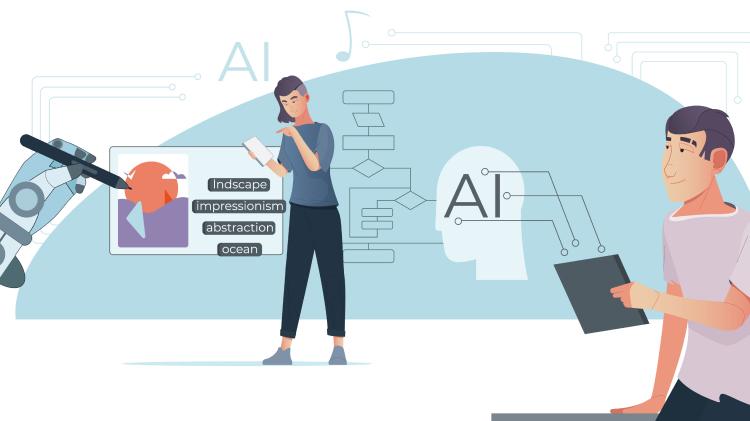Artificial Intelligence (AI) is no longer a futuristic concept; it has become an integral part of everyday life, transforming industries and enhancing efficiency. For those keen to harness its potential, the question arises: how to develop AI? This guide will walk you through the essential steps to develop AI solutions tailored to solving real-world problems.
Why Develop AI Solutions?
The importance of AI lies in its ability to process data, recognize patterns, and make informed decisions with minimal human intervention. From healthcare and finance to entertainment and transportation, AI is driving innovation and solving complex challenges. Understanding how to develop AI is crucial for businesses aiming to stay competitive and relevant.
Steps on How to Develop AI
1. Define the Problem
Every successful AI project begins with a clear understanding of the problem you want to solve. AI thrives when it has a specific goal, whether it’s predicting customer behavior, optimizing supply chains, or diagnosing diseases.
- Ask: What challenges do I need AI to address?
- Set measurable objectives.
Using a well-defined problem allows you to focus resources and improve the accuracy of your AI solution. This is the first essential step in learning how to develop AI.
2. Collect and Prepare Data
AI systems are only as good as the data they are trained on. Data collection and preparation are critical phases.
- Identify relevant datasets from internal or external sources.
- Clean and preprocess data to ensure accuracy and consistency.
When exploring how to develop AI, remember that data diversity is essential for training models that generalize well across various scenarios.
3. Select the Right Tools and Frameworks
A plethora of tools and frameworks are available to facilitate AI development:
- Programming Languages: Python, R, and JavaScript are popular choices.
- Frameworks: TensorFlow, PyTorch, and Scikit-learn are commonly used for machine learning tasks.
Choose tools that align with your project goals and your team's expertise. Selecting the right technology stack simplifies how to develop AI effectively.
4. Design the AI Model
Designing the AI model involves selecting the right algorithms to process and analyze data.
- Supervised Learning: Best for problems with labeled datasets.
- Unsupervised Learning: Ideal for discovering hidden patterns in unlabeled data.
- Reinforcement Learning: Suitable for tasks requiring decision-making under uncertain conditions.
Understanding which type of model suits your problem is a cornerstone of how to develop AI.
5. Train the AI Model
Model training is a process of feeding data into the system and enabling it to learn from patterns. Key considerations during training include:
- Splitting the data into training and testing sets.
- Tuning hyperparameters to optimize performance.
Frequent evaluations during training are necessary to refine the model. This iterative process ensures that you master how to develop AI solutions that deliver accurate predictions.
6. Test and Validate the Model
Testing and validation are crucial to ensuring the reliability of your AI system.
- Use a separate dataset to test the model's accuracy.
- Assess the system's ability to adapt to unseen scenarios.
Validation answers the question of whether your approach to how to develop AI is on the right track.
7. Deploy the AI Solution
Once the model meets performance benchmarks, it’s time to deploy the AI solution. Deployment involves integrating the AI system into your existing workflow or infrastructure.
- Monitor performance in real-world settings.
- Continuously update the model to adapt to changing data trends.
Knowing how to develop AI also means understanding the nuances of scaling solutions for broader adoption.
Challenges in AI Development
Developing AI is not without its challenges. Common obstacles include:
- Data Privacy: Ensuring compliance with regulations such as GDPR.
- Bias in Models: Eliminating biases in data to achieve fairness.
- Scalability Issues: Adapting solutions to handle large datasets and complex tasks.
Overcoming these challenges is a key part of mastering how to develop AI.
Real-World Applications of AI
Understanding how to develop AI opens the door to numerous applications:
- Healthcare: AI-powered diagnostics and treatment plans.
- Retail: Personalized recommendations and inventory management.
- Transportation: Autonomous vehicles and traffic management systems.
AI's versatility ensures its impact across virtually every industry.
Future Trends in AI Development
The future of AI development will be shaped by:
- Generative AI: Creating content, designs, and solutions from scratch.
- Explainable AI (XAI): Enhancing transparency and interpretability.
- AI Ethics: Focusing on fair, accountable, and safe AI systems.
Staying informed about these trends is essential for those seeking to excel in how to develop AI.
Conclusion
Developing AI solutions that address real-world problems requires a strategic approach, from defining the problem to deploying the final system. By following the outlined steps, you can master how to develop AI and leverage its transformative power for your goals. Embrace the challenges, stay updated on trends, and continue refining your skills to create impactful AI solutions.



